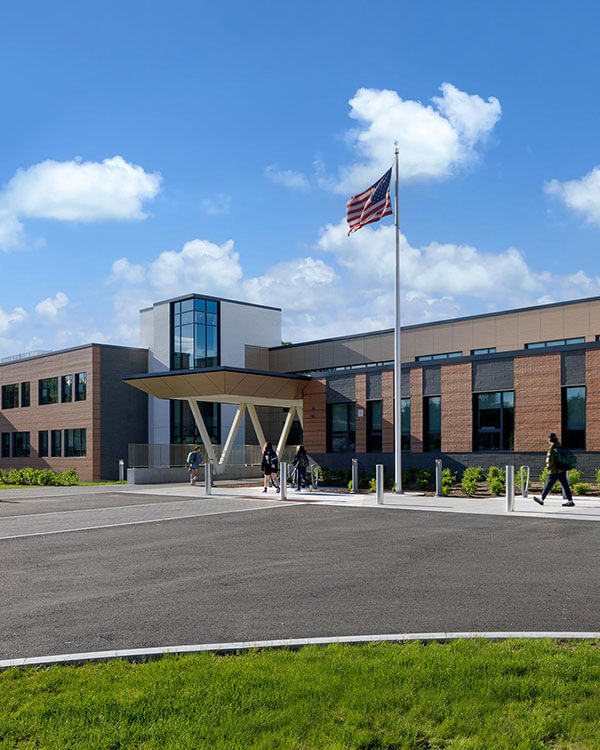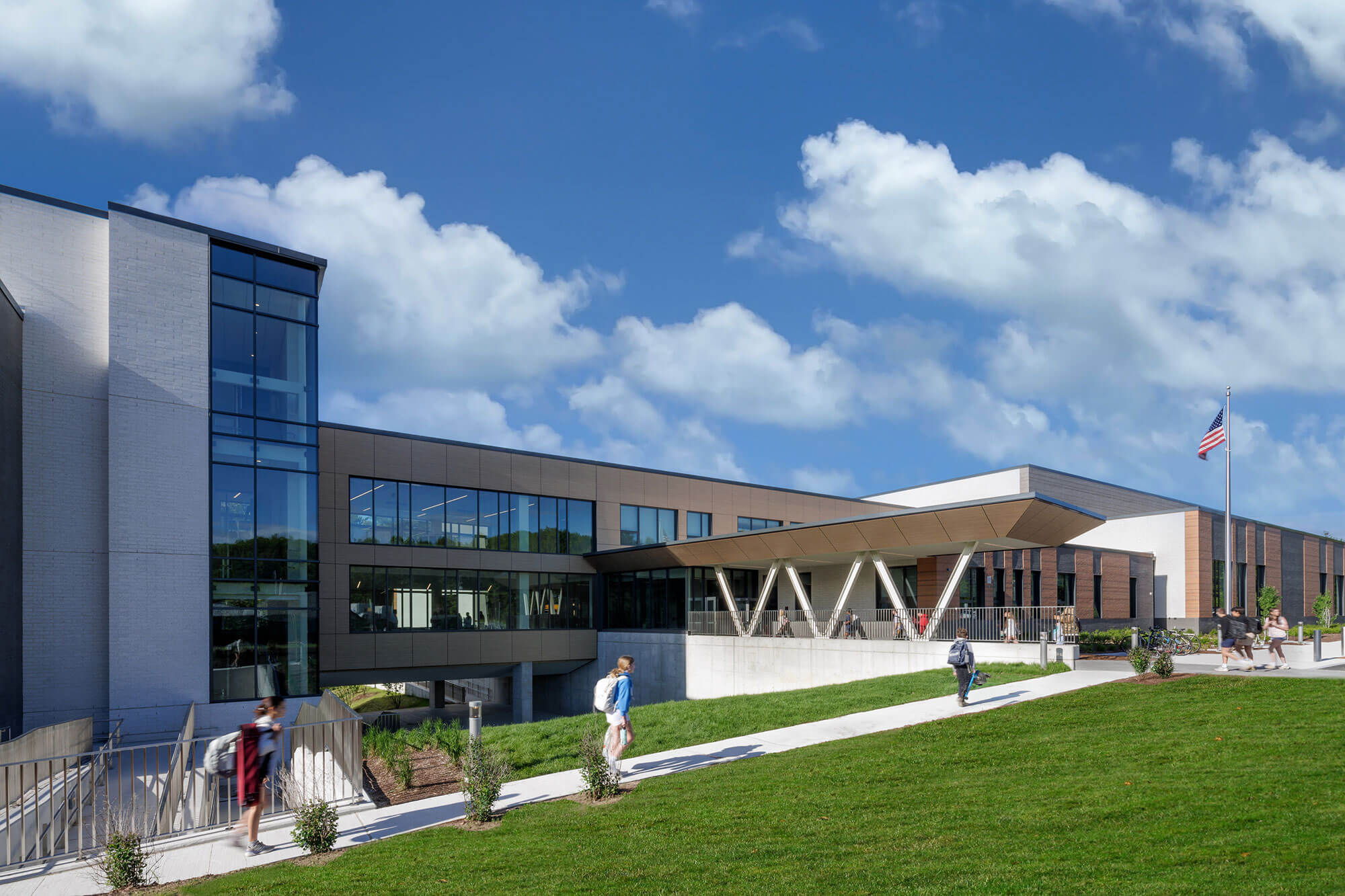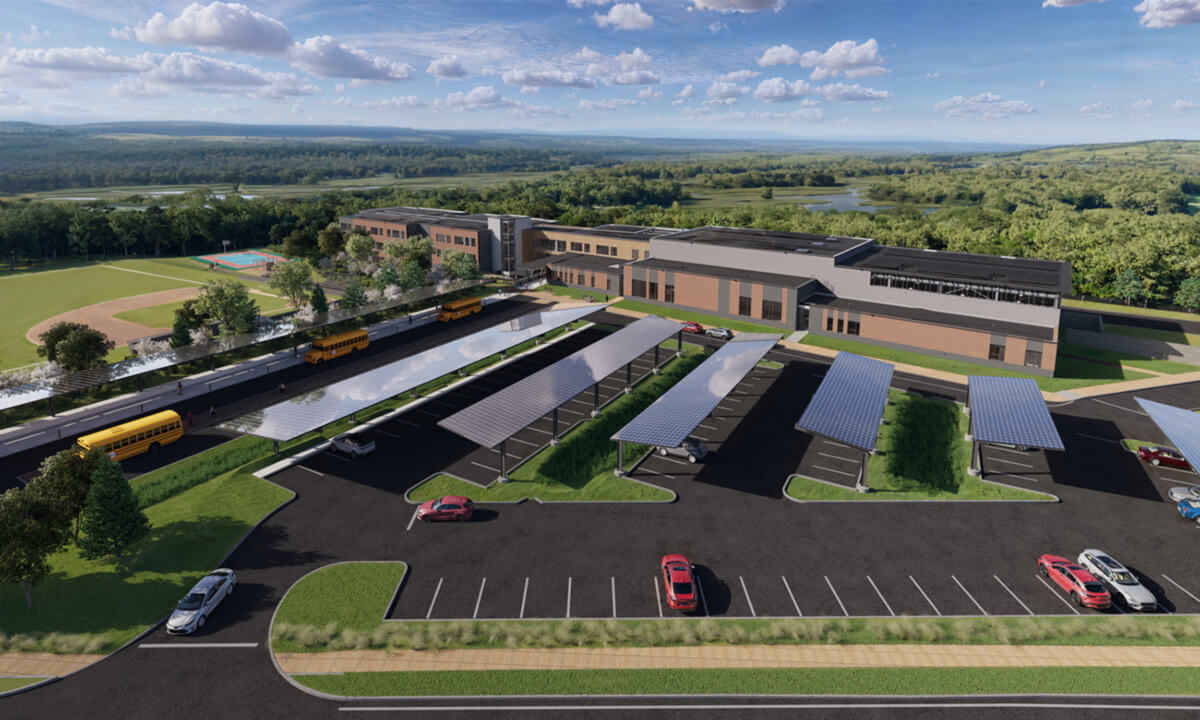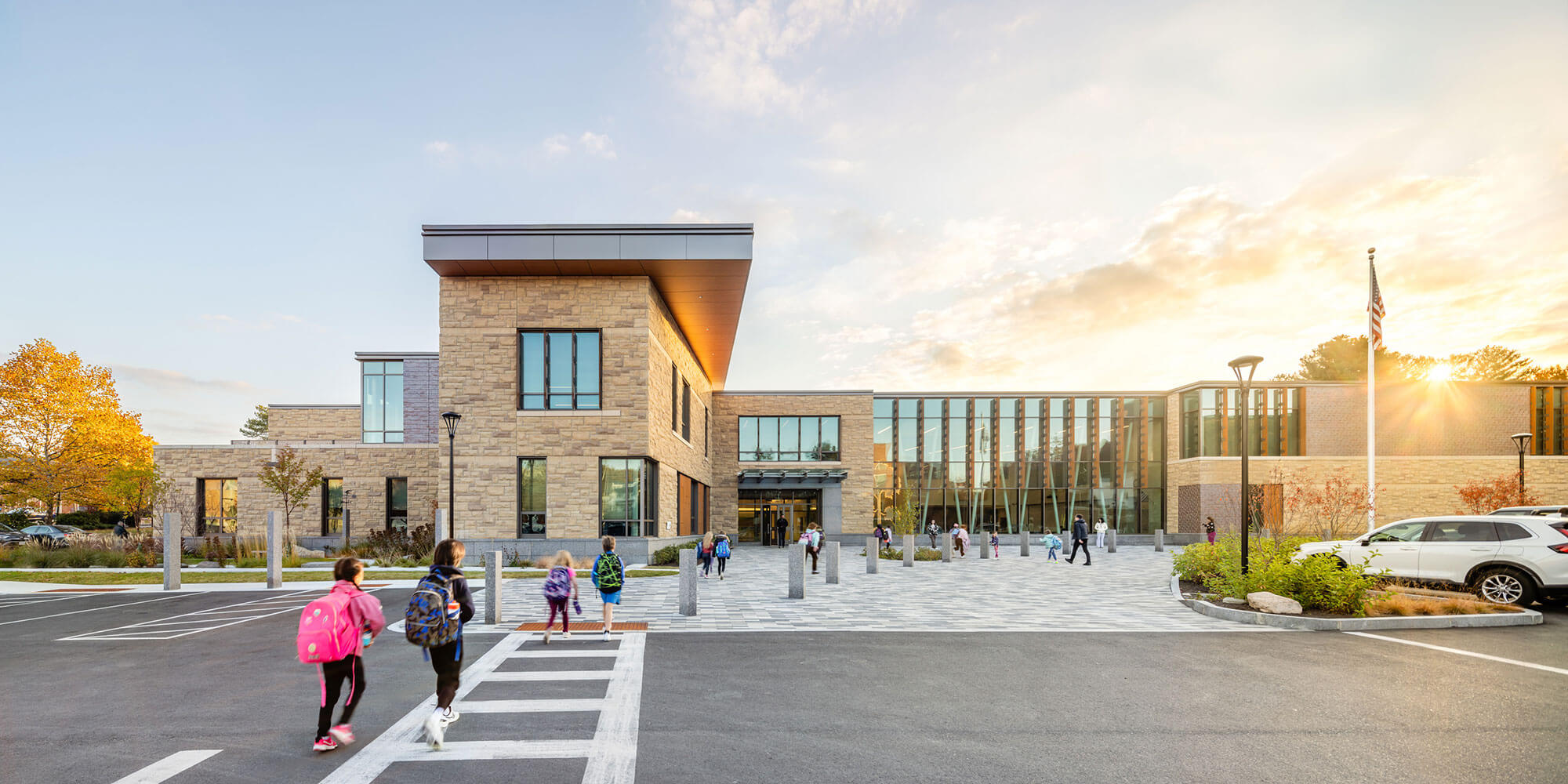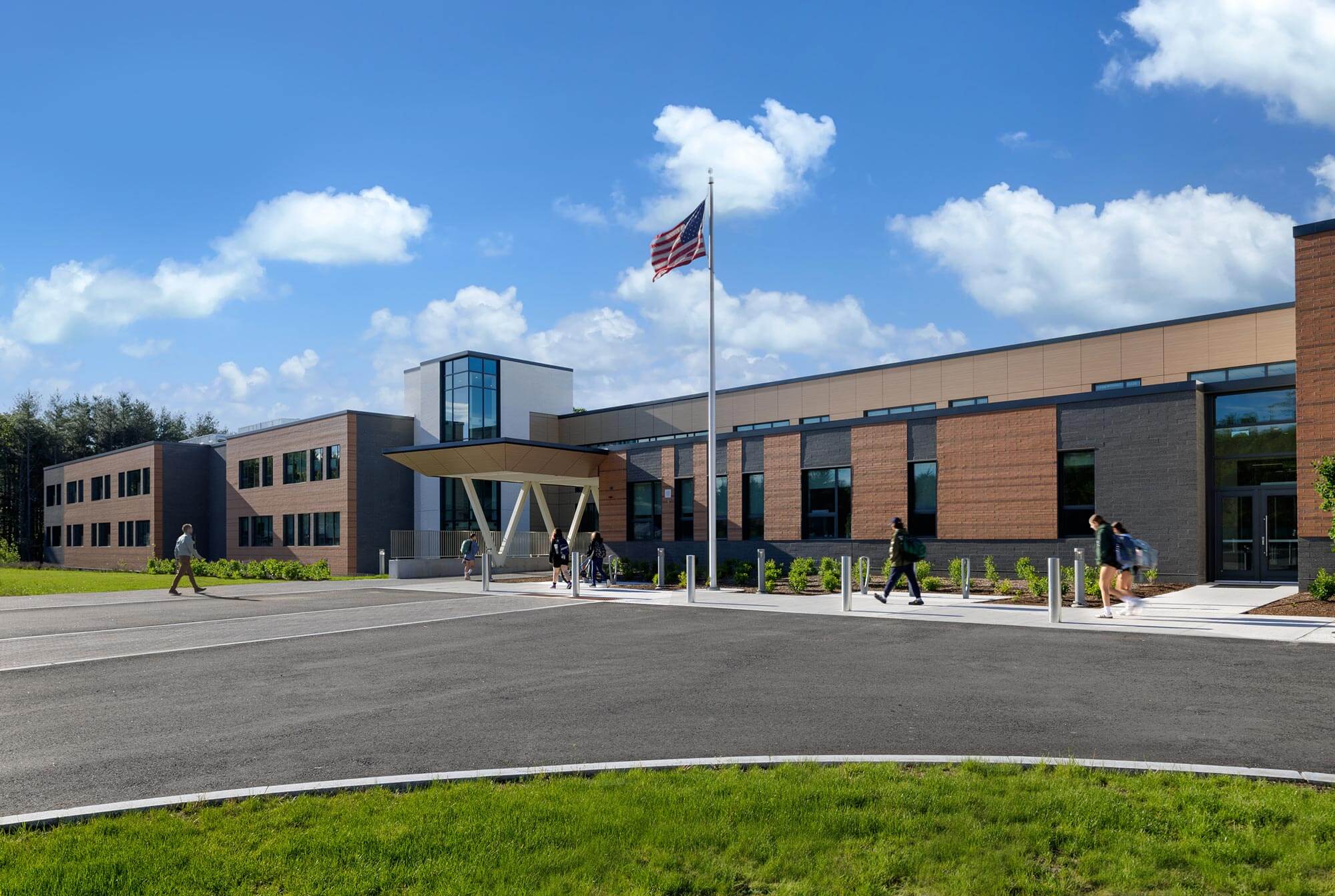
The new Concord Middle School is net zero ready.
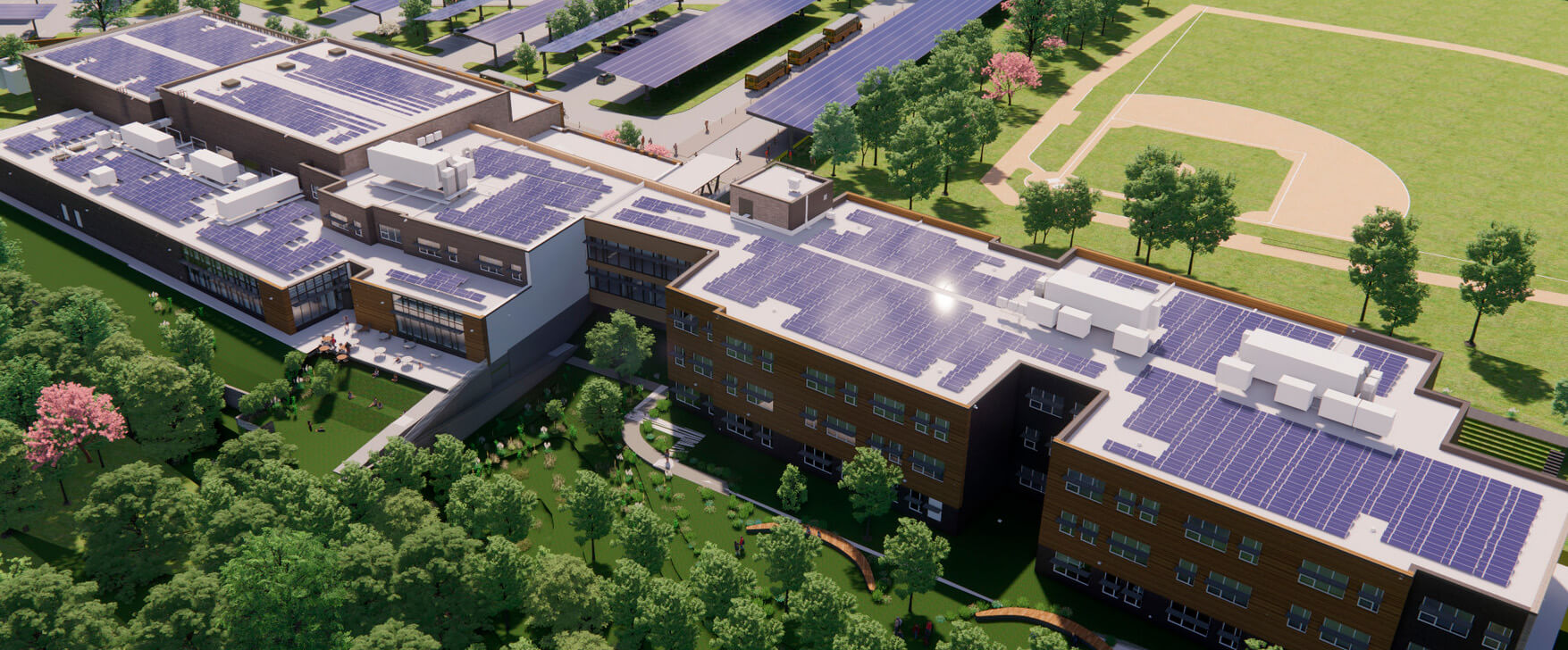
The design boasts a highly insulated and air-tight building enclosure, all-electric heating and cooling systems, and the planned installation of solar PV on the roof and parking canopies.
How MEP design helped Concord reach net zero readiness
|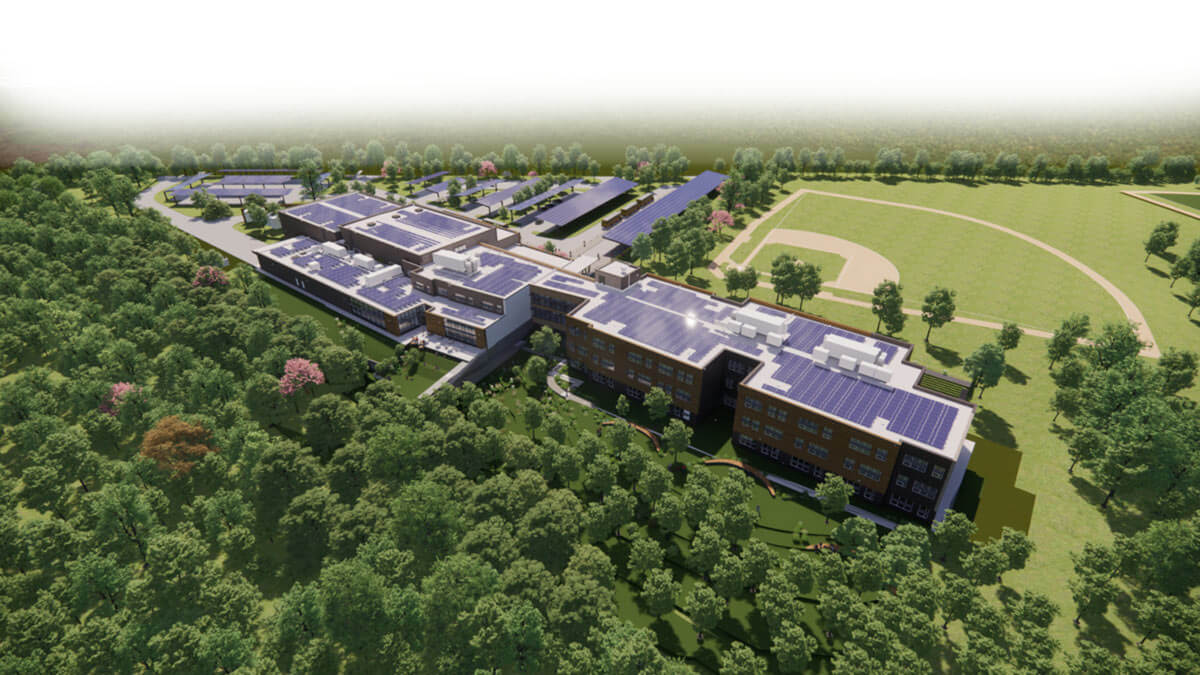
The Town of Concord has long been a statewide leader in climate and sustainability policy. Back in 2008 the town pledged to reduce its greenhouse gas emissions 80% by 2050; four years later, it was the first town in the U.S. to ban single-serving plastic water bottles.
True to this ethos, the community made clear its desire for a carbon neutral school project. SMMA’s design team worked closely with the school building committee to deliver a net zero ready facility with all-electric systems and no on-site fossil fuel use.
This net zero goal posed two main engineering challenges:
- Design an HVAC system that uses as little energy as possible while providing excellent air quality for the building’s users.
- Design an electrical system with enough efficiencies to offset the increased power supply of all-electric, which requires double the power capacity of natural gas.
To solve the first challenge, the team turned to state-of-the-art HVAC equipment to provide heating and cooling. These included sensor-operated systems with highly efficient heat pumps, motors, fans, and compressors: demand control ventilation with CO2 sensors, direct outside air systems (DOAS), and variable refrigerant flow (VRF). (Learn more about this design approach in our guide to balancing wellness and energy efficiency.)
The second challenge saw the team partner with the town’s utility provider to double the school’s power capacity by upgrading the electrical service. As for the building’s electrical design, the team used a combination of on-site renewables (solar PV), advanced lighting and plug load controls, battery Energy Storage Systems (BESS) and efficient LED lighting to reduce energy load and achieve net zero ready performance.
42.4%
Carbon Reduction
7.3
years
Payback
25.5
kBtu/sf
EUI
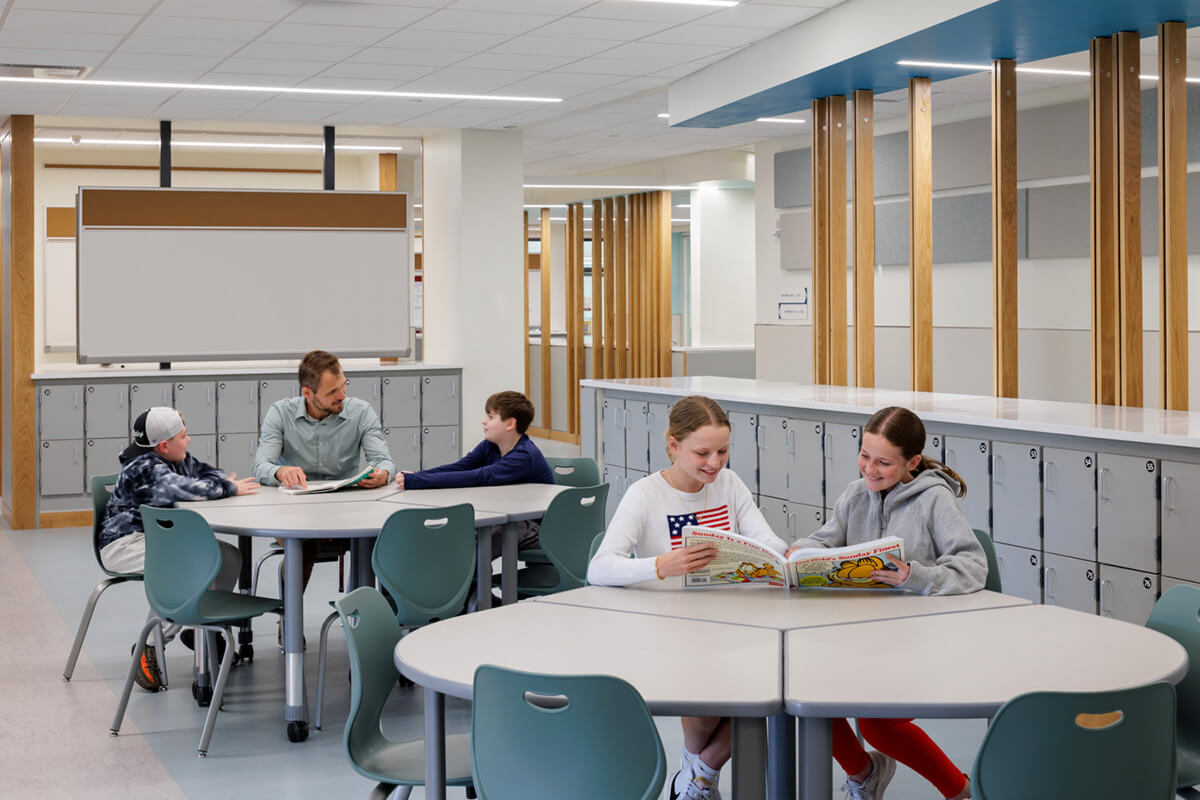
Learning spaces reflect the school’s “team teaching” model.
Each grade boasts a “team” formed of three core classrooms and a dedicated science lab. These spaces are clustered around a central team commons, where students can engage in project-based learning, small group work, and 1:1 tuition.
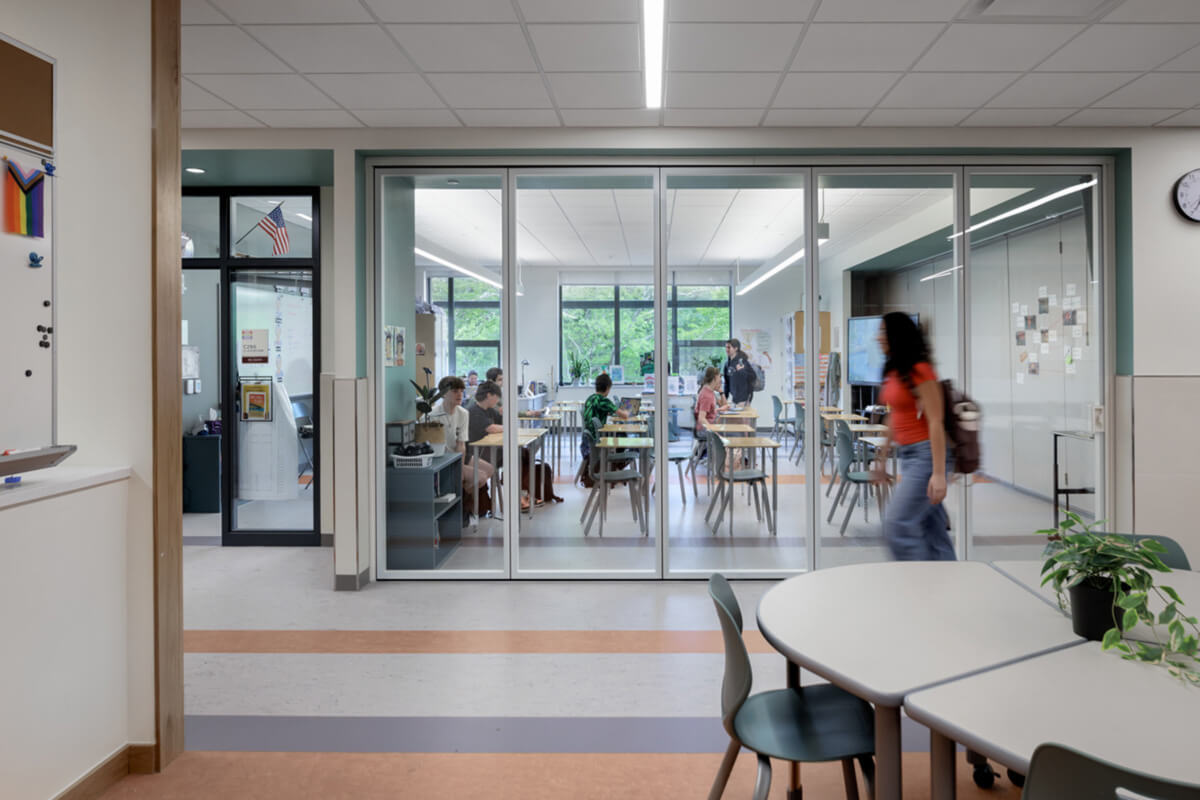
Operable partitions and folding glass walls allow seamless connections between the classrooms and the commons. By organizing students and teachers in this way, Concord Middle School creates a sense of belonging among smaller cohorts—a “school within a school”.
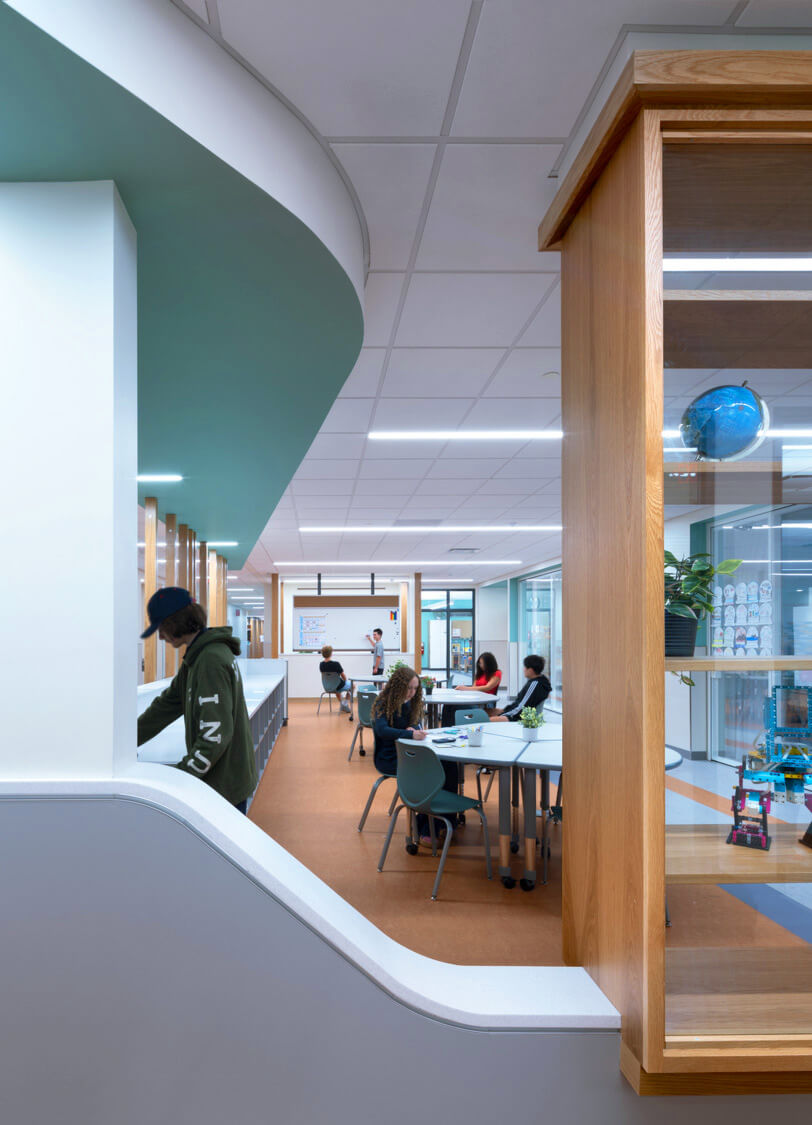

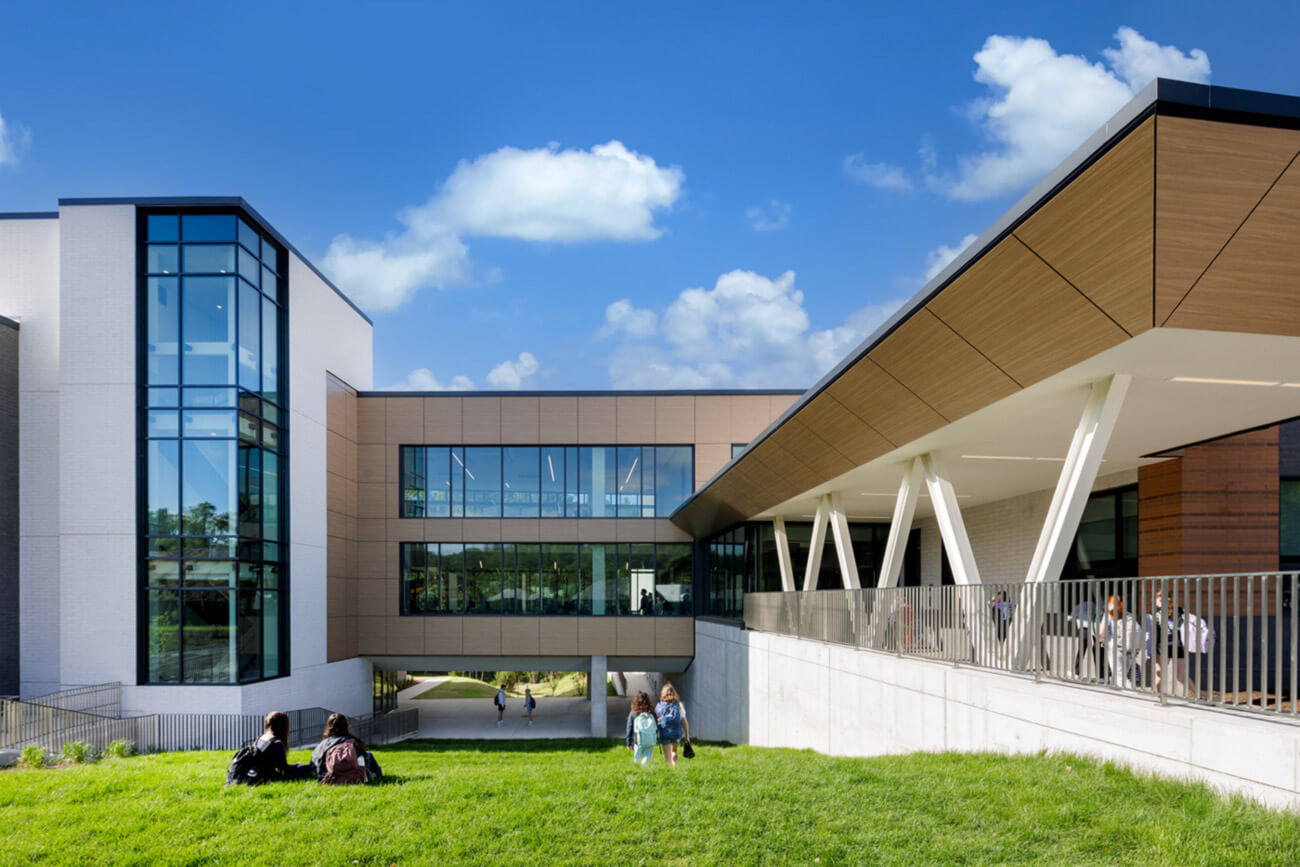
The building is divided into two wings: classrooms and public spaces.
The public wing includes a lobby, media center, cafeteria, gymnasium, and auditorium co-located at the front of the school for easy after-hours community use. The wings are connected by a two-level “bridge” with informal learning areas for collaboration and chance encounters.
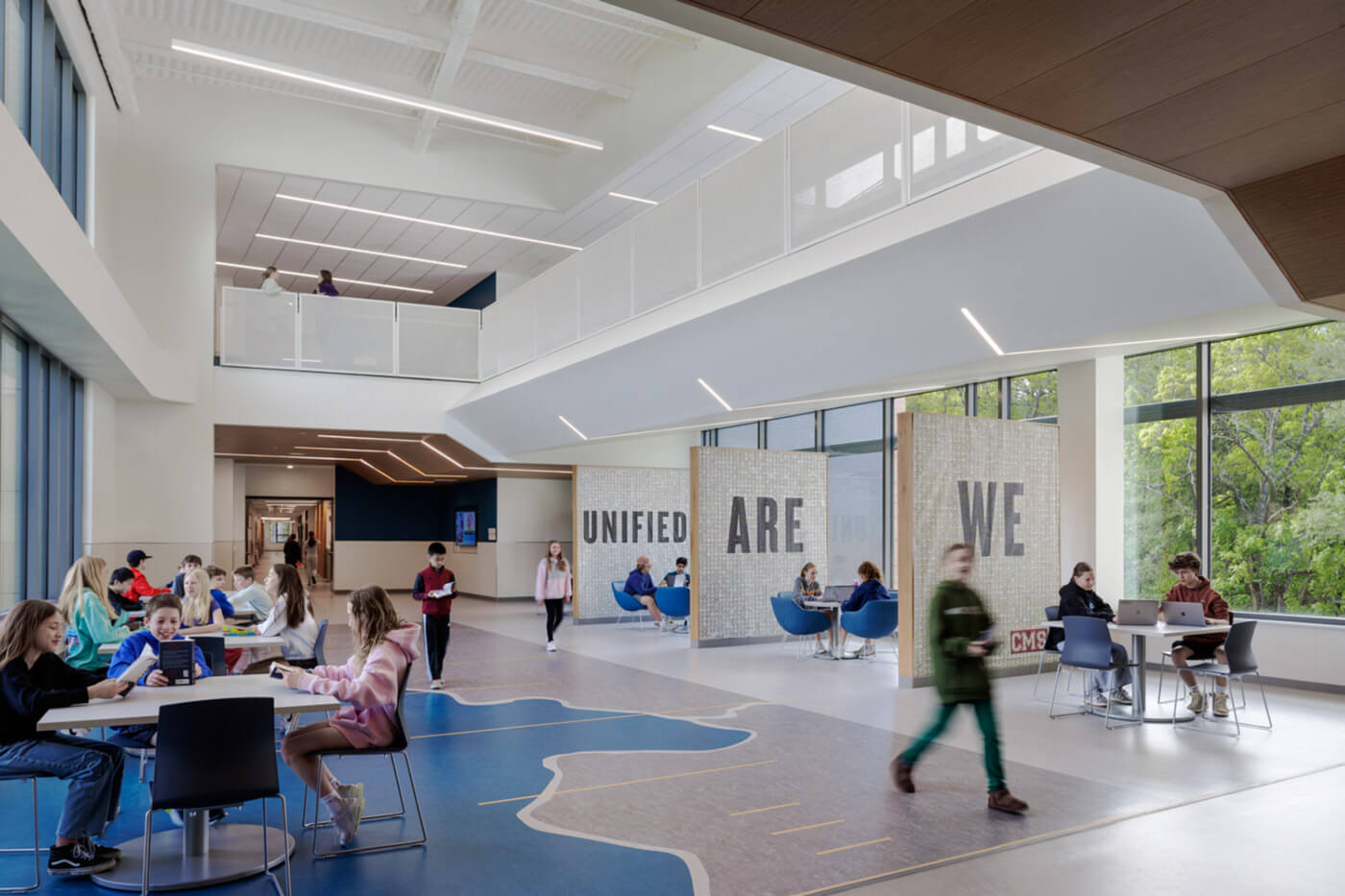
The floor of the bridge incorporates a graphic illustrating the journey of the Concord River, complete with mile markers. This not only serves as an educational tool for experiments and understanding scale but also reinforces themes of movement and connection to the broader natural landscape.
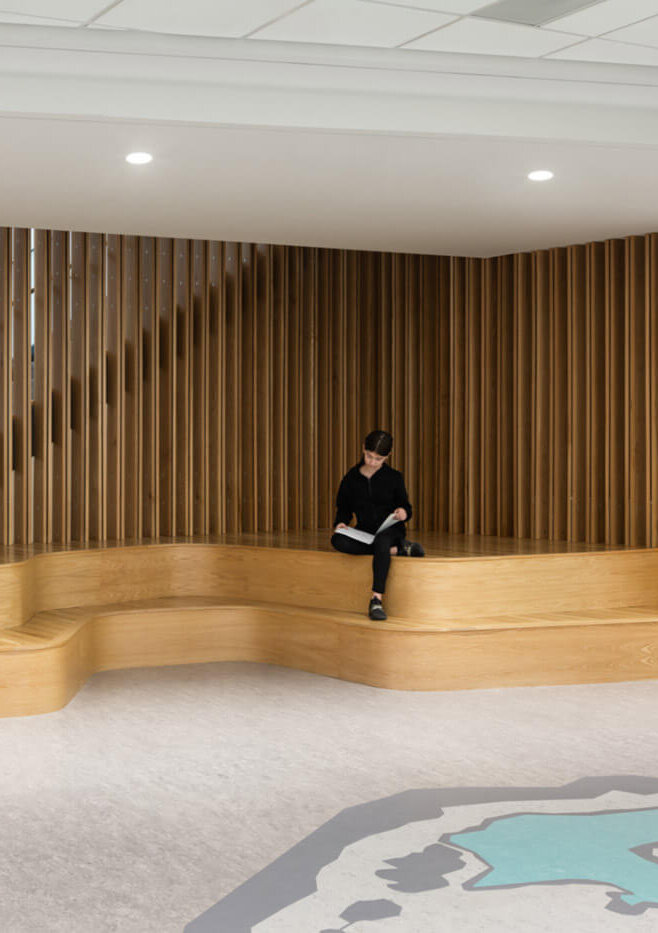
Making creative use of its sloped site, the new school provides a sense of scale and connection to the environment.
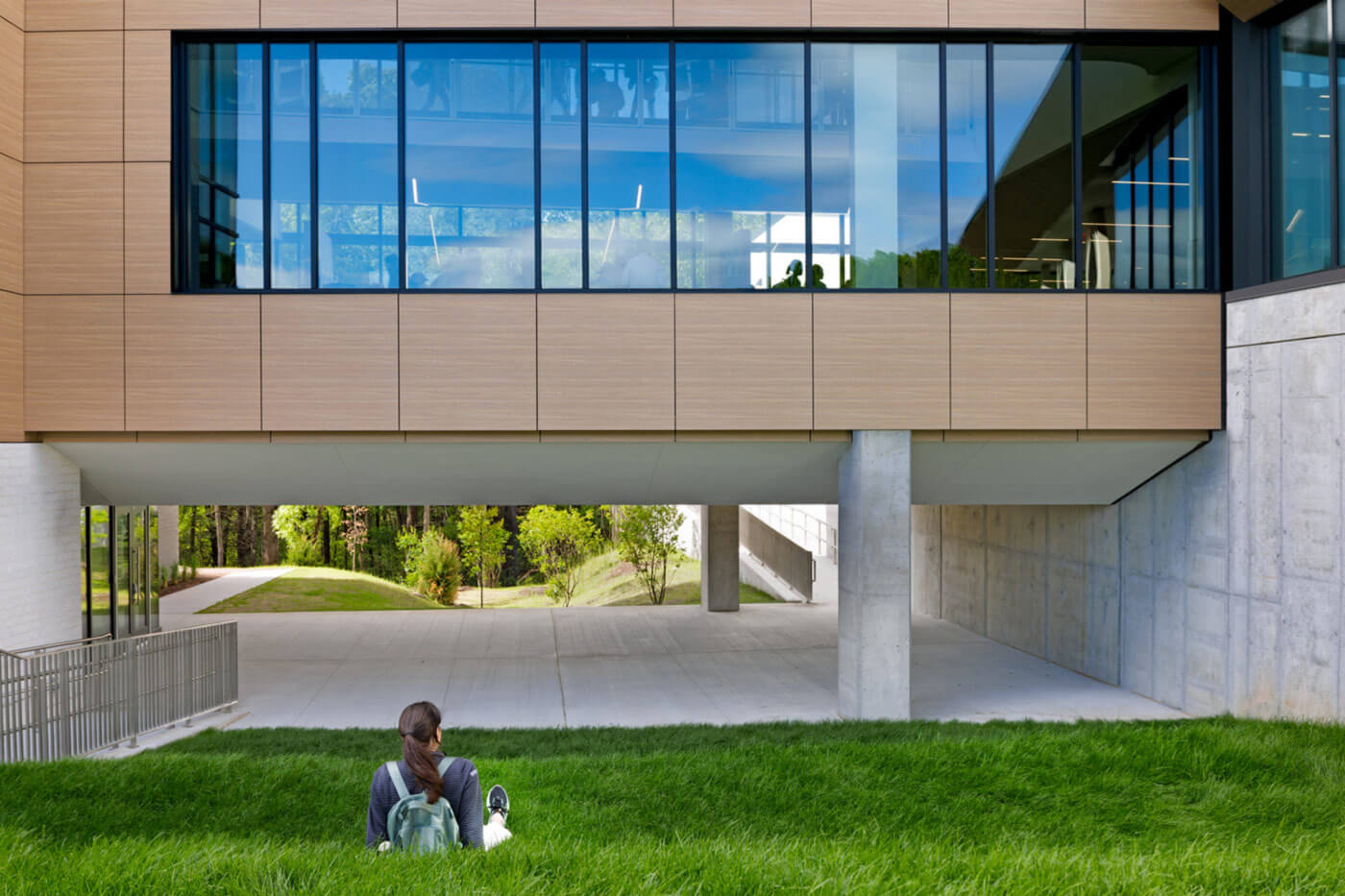
The bridge connects across an existing natural site ravine, allowing the landscape and nature to visually flow beneath the building.
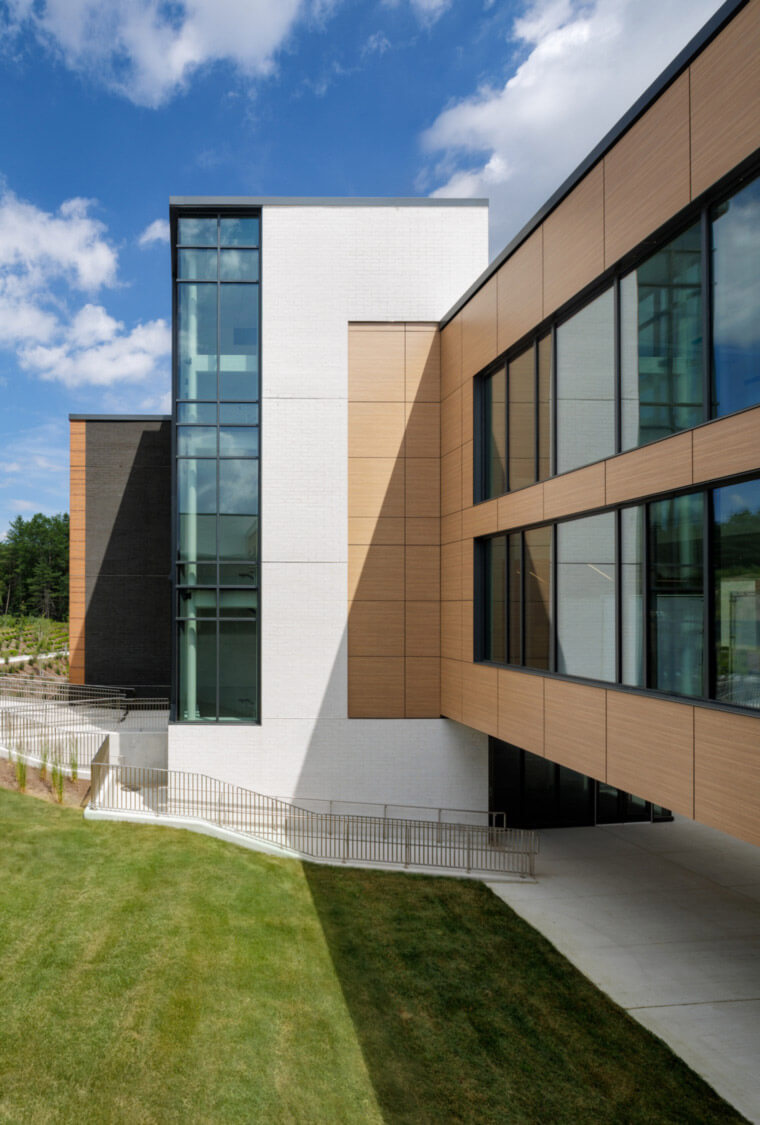
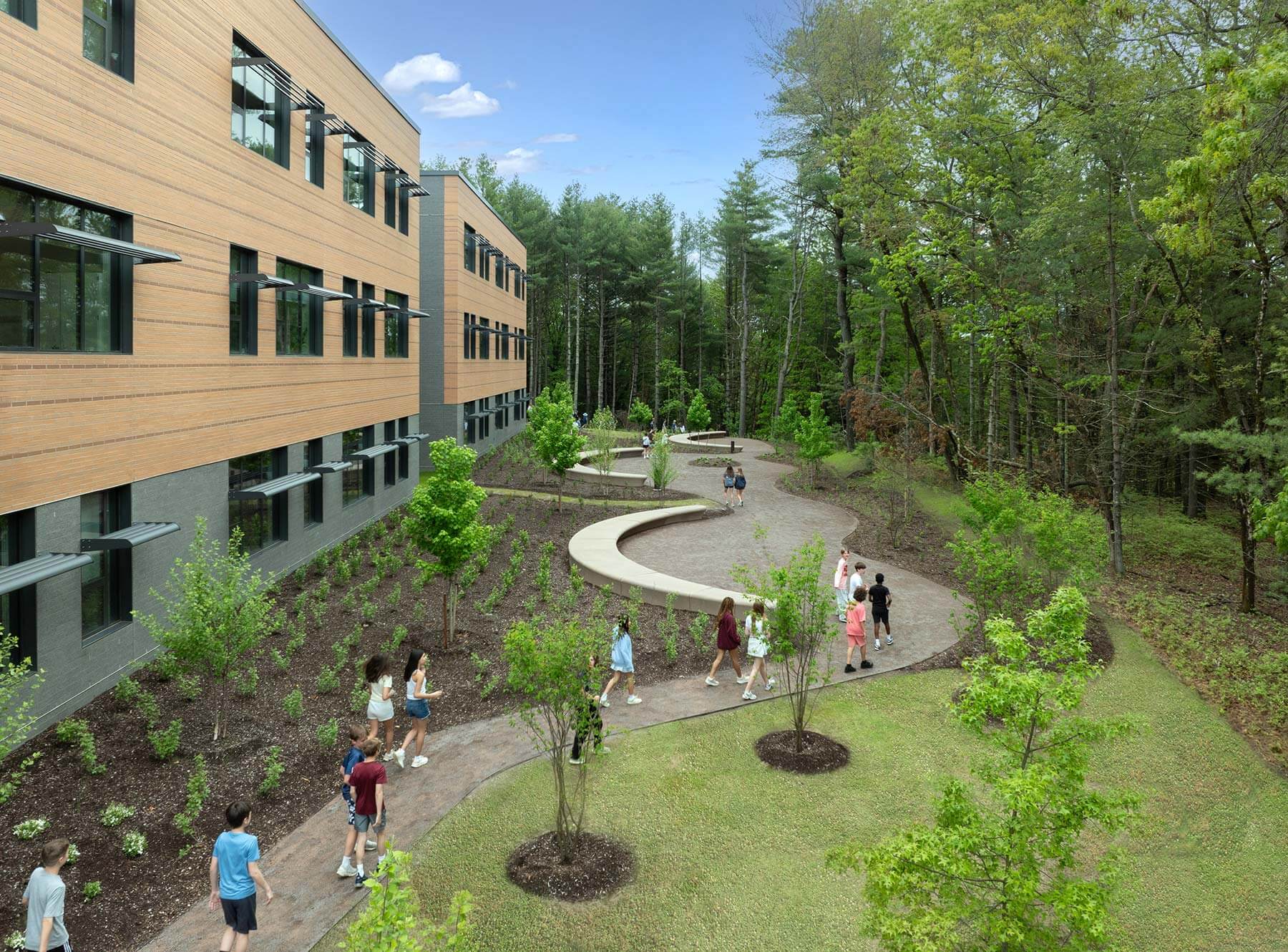
The landscape design encourages students to spend time in nature.
Outdoor spaces at Concord Middle School include classrooms, dining areas, playgrounds, paths, and lawns.
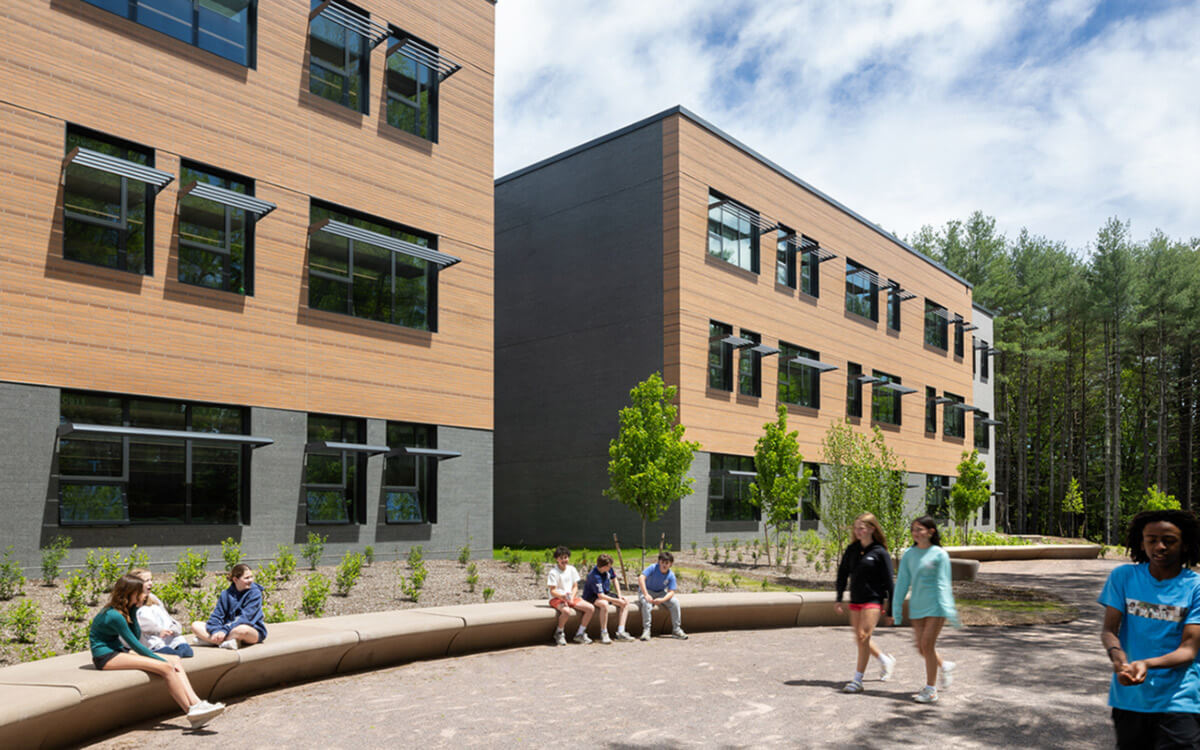
The school is located next to an undisturbed forest. Strategic use of glazing maximizes natural light and views to nature while maintaining a low window-to-wall ratio for optimal thermal performance.
